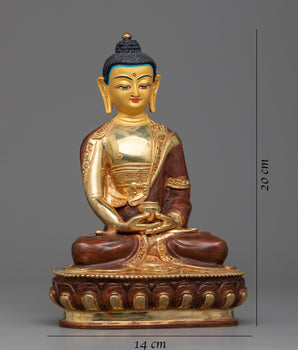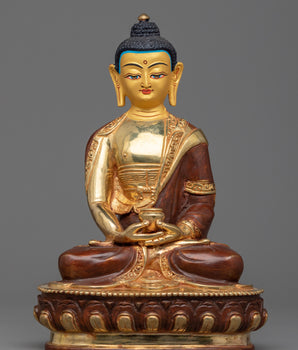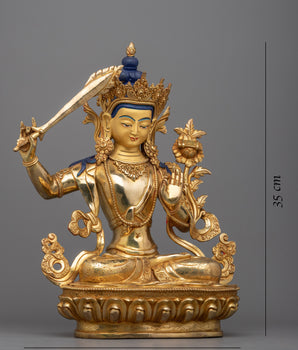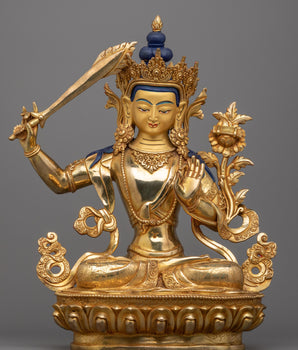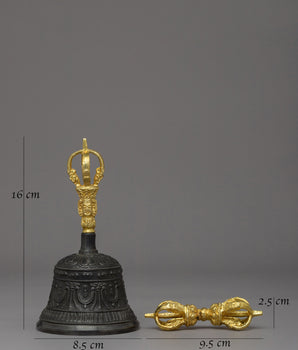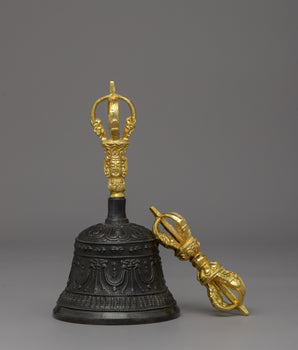Ghau Box Locket: Blend of Spirituality and Fashion Appeal
The Ghau Box Locket is a special Tibetan amulet that unites aesthetic value with profound spiritual dimensions. The religious heritage extending over multiple centuries ties together both modern belief systems and their historical ancient customs through Jewish religious jewelry. Operates beyond decorative function as it serves as a sacred receptacle for religious items like mantras and prayers, and small deity statues that provide protective vows for its wearer. The skilled artistic work behind it turns it into a sacred devotion symbol. Through its functionality, the Ghau Box Locket unites Tibetan beliefs of old with modern life practices.
What is the Ghau Box Locket?

The Ghau Box Locket is a small, elegant religious container created with intricate detail for safeguarding and blessing. Tibetan and Himalayan Buddhist culture maintains profound respect for it, which the people call Gao. It is a spiritual protector combining precious silver and brass metals to create a centuries-old sacred object. Semi-precious stones, filigree work, and Tibetan Buddhist auspicious symbols decorate the outside surfaces of the prayer box. The symbols have deeply significant spiritual value, which creates spiritual connections between the wearer and Buddhist teachings. The box contains sacred elements like handwritten Buddhist texts, with miniature religious artwork and herbal medicinal substances.
The Ghau Box Locket is also a sophisticated artwork that showcases deep faith symbols and shields the wearer with sacred forces, demonstrating how art diminishes the distance between faith and tradition across Tibetan and Himalayan cultures.
Origin of Ghau Locket Box
The Ghau Box Locket represents one of the important spiritual artifacts in Tibetan Buddhism and the Tibetan cultural heritage. The Himalayan mountains produced this practical devotional item that originated there. Over centuries, it evolved into a transportable container that gathers sacred artifacts with blessed scrolls, tiny sculptures, religious deity images, and medicinal plants. The items inside the box were thought to generate protection, blessings, and spiritual direction for those who wore them. Skilled artists manually created these items through metal construction of silver or copper pieces containing detailed engraving, as well as decorative turquoise and coral semiprecious stones. The spiritual objects that rested inside the locket experienced blessing from lamas and monks, thereby amplifying their spiritual power. It held dual importance within Nepalese families preserved this object as an essential sacred inheritance. The Ghau exists today as a valuable piece of craftsmanship, which proves to be both a collection piece and a reminder of historical times. It conveys the fundamental need for safeguarding and blessings while maintaining spiritual connections throughout life.
Cultural and Spiritual Significance
The Ghau is a handheld shrine called a miniature temple, which enables people to maintain a bond between physical existence and spiritual reach. The sacred chamber within the box reveals itself to display spiritual items that represent their potent meanings. The hand-carried items are used for protection and invoke blessings while building up the wearer's spiritual awareness practice.
1. Mantra and Prayer Scrolls:

Written mantras and prayer scrolls (amulet paper) made from paper and cloth serve Buddhist purposes since believers consider them to possess energetic vibrations that create protective energy. Ghau owners demonstrate their consistent meditation practice by keeping these mantras inside their spiritual device.
2. Miniature sculptures:
Buddhist deities Avalokiteshvara, Tara, and Manjushree exist as small status items that serve as sacred representations of divine Buddhas alongside bodhisattvas and other spiritual figures so people may experience their wisdom firsthand.
3. Tsa-Tsa (Clay Image):
According to Buddhist belief making small clay Buddhas allows believers to acquire spiritual blessings as well as collecting positive karma.
4. Herbs and Relics
The traditional Tibetan culture utilizes healing and protective qualities attributed to particular herbs with relics, by placing them inside the Ghau. Traditional Tibetan cultural practitioners select protective herbs as spiritual defense to be placed inside for healthcare benefits against illness, negative energy, and misfortune.
Artistry of External Decorations
Elaborate ornamental designs cover the outer Ghau surfaces to symbolize Tibetan Buddhist teachings. These designs carry deep religious value, specific sanctified virtues, and defensive properties. Common decorations include complex filigree among repousse designs, the intricate web of universe connections, and spiritual life. Two spiritual symbolic stones, namely Turquoise and coral, provide healing properties alongside protective elements and essential life force. The Ghau also contains sacred motifs, such as a lotus, conch shell, Buddhist wheel, endless knot, purity, interconnectedness, and existential lessons on enlightenment. The spiritual significance of the symbolized lotus flower stands for enlightenment, along with external inscriptions that include spiritual chants known as “Om Mani Padme Hum” for wisdom and compassion.
The Ghau Box Locket contains different deities that possess significant spiritual along symbolic worth. Avalokiteshvara serves as the Bodhisattva of Compassion through whom countless beings seek assistance to free themselves from all forms of suffering. People invoke Green Tara above all other forms of Tara; her combination of quick defensive assistance and compassionate behavior brings them mental safety from challenging situations. Within her depiction, Manjushri uses a flaming sword as a tool to destroy ignorance; she symbolizes clarity and mental wisdom. Wearing it allows people to connect with divine energies that facilitate personal growth and peace, and create a relationship with the enlightened qualities depicted in the sacred symbols.
Regional Variations and Uses

The Ghau Box Locket has fulfilled its purpose as a spiritual possession for individuals and a cultural manifestation throughout history. People relied on the box Locket as more than just jewelry, it served as a valued item during their travels and among families. Different Himalayan cultures created their designs and specific applications when Tibetan Buddhism expanded during its dissemination across the area.
Tibetan Ghaus
Among Tibetan Ghaus, the larger designs included detailed Buddhist carvings of Buddhas and bodhisattvas. These bigger Ghaus got concealed beneath numerous clothing layers, providing ongoing protection to the wearer, even though they remained hidden. Throughout the day, the Ghaus operated as private prayer spaces where users could access holy contents as they practiced their faith.
Nepalese Ghaus
The Ghau design in Nepal derives its character from Buddhist and Hindu practices. Decorative elements inside the Ghaus featured multiple design elements with a combined religious aesthetic found in Hindu and Buddhist traditions. Buddhist symbols, along with Indian-inspired motifs, represent how Hinduism and Buddhism have maintained peace throughout Nepali history.
Bhutanese Ghaus
Bhutan has a tradition of the sacred family heirloom Ghau, which families would transmit across generations. The object found religious significance that exceeded protection from spirits and prayer blessings to serve as an object representing ancestors. People considered it an ancestral power source that received religious blessings from their lama supervisors to maintain its spiritual strength.
Through its portable design, the Ghau Box Locket provides endless prayers, protection, and spiritual leadership and serves as a moving sanctuary. The devotional artwork merges artistic perfection with theological meaning, which unites attractiveness with religious devotion. Through its contents, it provides both physical and spiritual healing and connects you to ancestral blessings. The religious artifact proves its excellence through skilled creation while expressing profound spiritual concepts and beauty as faith.
Protection and Purification
The Ghau Locket is a spiritual item that requires proper care and handling. It should be cleaned with a soft, dry cloth and avoid using harsh chemicals as they can harm the locket's structure and energy. The charm requires two methods of recharging: incense-smoke cleansing rituals and exposure to moonlight to restore its protective capability. Proper respect for the item is vital because it requires placement in a clean setting where individuals can pray or meditate. Store the locket safely, silk wrap, and store it in a protected place to preserve its spiritual nature and transformative power whenever it is not in use. It is believed that placing it on your altar or keeping it in a sacred space to invite blessings while activating protection magic through rituals. Regular checks should focus on the energy of the spiritual tool and must involve cleansing rituals if the energy feels off; this practice preserves the tool's protective strength and spiritual value.
Contemporary Adaptation and Global Appeal

People who desire spiritual grounding in contemporary society have rediscovered the significance of the Ghau Box Locket during recent years. Outside its traditional Himalayan context, people who practice spirituality, yoga practitioners, and art collectors now wear the Locket for its sacred meaning and handmade creation value. Various practitioners utilize the Box Locket when meditating, it functions as an object for focusing their intentions and safeguarding their space. Artisans now produce modern locket adaptations which include contemporary materials along with minimalistic designs for people who honor its sacred purpose while embracing today’s aesthetics. The adapted design demonstrates how holy traditions stay relevant in modern times without losing their connections to sacred base or contemporary requirements.
Conclusion
The Ghau Box Locket is more than a historical object, it helps people maintain their faith and cultural heritage and spiritual connection across generations. It is originated from Tibet and the Himalayan areas, bringing prayer whispers together with ancestor blessings and Buddhist teachings spanning several centuries. An ornate design combined with artisans' devotion showcases the exterior of the Box Locket, which contains sacred artifacts that consistently provide guidance, protection, and inner peace.
The Ghau exists above mere adornment because people keep it for home altar use, travel wear, or as an ancestral piece passed through families. The personal sanctuary links the physical world with unknown realms and preserves devotion power alongside divine wisdom and spiritual peace. People living in a rapidly changing society should use the Locket to slow down their lifestyles, reconnect with their religious beliefs, and deepen their commitment to spiritual thoughts and higher meaning. Holding it allows one to express sacred devotion towards everything that constitutes a religious path. Faith gets propagated through wearing it beautifully as an expression of deep devotional affection.





